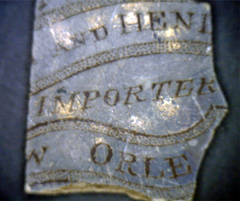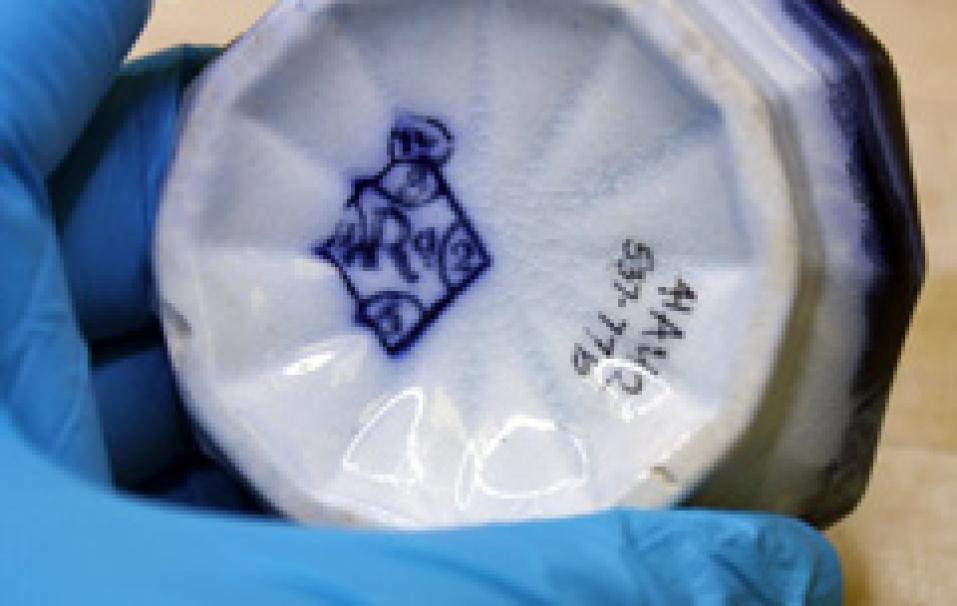By Jamie Ross, THC Historic Sites Collections Specialist
Ceramic fragments are one of the most common finds during archeological investigations. Ceramics, especially those fired at high temperatures, are extremely durable. They are able to hold up against weathering and can withstand being buried for long periods of time. Because of this, ceramics are an excellent artifact type to use for analysis. Archeologists can measure a type of ceramic’s frequency to determine the preferences of the area’s former inhabitants. These archeologists can also gauge the extent of trade networks or better understand food preparation, storage, and eating patterns. There are also some ceramics that enable archeologists to make more specific predictions.
Ceramic pieces that contain registry marks offer a great deal of information. Registry marks can be found impressed or stamped onto ceramic or glass, and they are an indication that the object was designed and manufactured in Britain between the years 1842–1883. The British Patent Office issued a diamond mark and registration number when manufacturers submitted their work for registration during that time period. These diamond marks indicate the class of the material, but they also indicate the exact date that the design was registered. The British National Archives retains a record to this day of all ceramics registered. Those records contain a sketch or picture of the pattern, the name and address of the designer, and the number of items being registered (known as a parcel or bundle). Willing researchers can discover a host of information from a small mark on a piece of pottery. When finding archeological remains with registry marks, an archeologist can assume that the object and the materials found around it were buried after the date on the ceramic fragment.

Other ceramic artifacts that yield a great deal of information are fragments found containing importer marks. Importer marks are different than ceramic maker’s marks, which provide information on who designed and manufactured a particular piece of pottery. Importer marks were impressed on pieces of ceramic to indicate for whom a piece of ceramic had been manufactured. Importer marks on various ironstone vessels and other objects indicated that the articles had been manufactured specifically for an overseas seller. These under-glaze marks were applied to show the buying public that a local merchant had a special relationship with English manufacturers. This special relationship could indicate that the importer may be able to buy and sell at lower prices or perhaps they were granted access to the latest styles. Finding an importer’s mark on a piece of ceramic sometimes allows archeologists to trace the artifact back to the very address of the shop where the piece was originally purchased. It also allows archeologists another opportunity to establish a date range for when the material was in circulation by establishing when the particular importer was in operation.
Only a small percentage of ceramic fragments can provide such revealing information. Finding registry marks and importer marks is rare, but it is always exiting when it does occur. Some archeological investigations generate thousands of ceramic sherds, none of which contain any markings to indicate specific dates. Instead, archeologists have to use other methods of analysis to determine when and where an artifact was produced or purchased. Dating material through ceramic markings is only one method out of many, but because it can sometimes be specific enough to place an object in a store window, it is one of the most satisfying.
For more information about the THC's curatorial work, visit the Curatorial Facility for Artifact Research.

